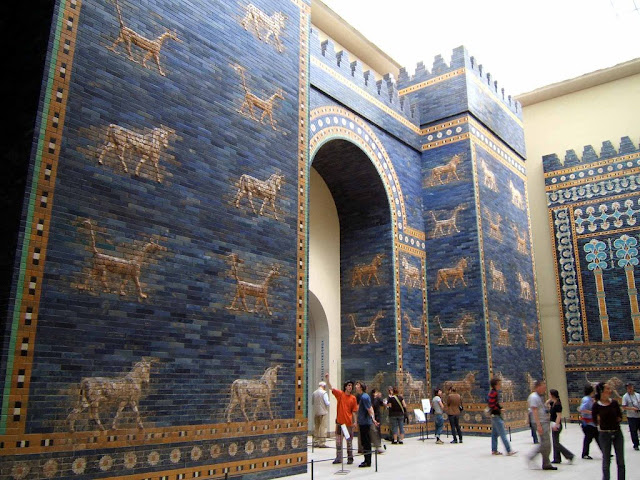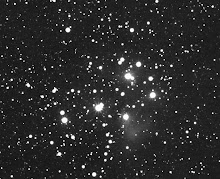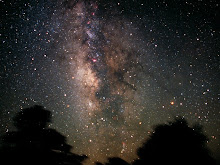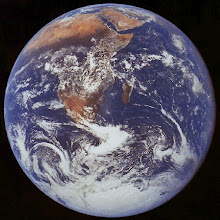The entirety of human communications can be
viewed as the communications of one entity, planet
Earth, Terra, etc. as it finds itself in a universe in
which spectra reveal a great deal of information
about atomic elements, compounds, gases, stars and
galaxies, even a broad realm of chemical molecules
that have to do with life, yet so far, no replies from
intelligent agents.
On the other hand, some religious groups, both
ancient and modern, assert that living beings do exist
on many other worlds. Among modern groups
adhering to that idea, some assert they have a sense
of it although the communication is nonspecific and
so far not detectable by machines or translatable
symbolically although a sense of the implications is
gradually emerging.
The two camps are not adversaries; rather, they are
like separate team players covering a very large
field. For instance, technical scientists, who are
using some very sensitive instruments, do not say
that intelligent life does not exist in the universe
just because they have not detected any. They say
that life PROBABLY DOES exist elsewhere in the
universe and either the signals are so faint because
of distance, because of the direction of transmissions
in other directions than toward Earth, scarcity and
rarity of transmissions or simply the absence of
technology, none are being detected.
This is similar to the vast teamwork between Church and State, Religion and Science, etc.
In the other part of the team, those who adhere to the more traditional theological sense of life existing throughout the Universe often say that the scientists are simply looking for something that is not as often developed by intelligent, sentient or other living beings as the scientists assumed in this period of technological prowess. For instance they hold that much communication or at least familiarization with the universal codes of life, have implied goodness, devotion, holiness, reverence, and other highly regarded spiritual values already for many thousands of years to many different persons, including some held so virtuous as to be ennobled, exalted or deified.
Thus, the stars were not won by dinosaurs not only because they had not attained intelligence, communication and technology, but because they had not attained spiritual, moral, or even thermodynamic and gravitational senses of justice, mercy, civility, community and cooperation. From the geological record, it is clear that some dinosaurs walked around on two legs, had at least rudimentary hands and used primitive, brute intelligence but it went nowhere until they devolved to the problem of energy. At that time they had some sense of species though it was coarse, and they begin the emergence of species that related to each other on the statistically
much more sensitive phenomena of temperature stabilization and common sense of heat as well as light and color.
Stable temperatures permitted organisms to begin distinguishing more sensitively between differences in spectra and to see commonalities between visible light, and the near ultra violet and near infrared; to begin to find energy has some kind of monotonic scale even when of different kinds (chemical potential; gravitational; thermal, etc.) and eventually to use and control fire.
Ultimately, seriously substantial large ordered constructions began with the building of earth mounds, organized and probably forced labor, and stacked stone structures of rapidly increasing mass and size. Pyramids were, it appears, actually popular, because the gravitational potential energy in their heavy stone blocks were obvious reminders of large energy structures. That is, they left something which would be permanent, visible, respectable forms upon the Earth to justify all that labor. The heaviest have approximately the energy, in the form of gravitational potential energy, which would eventually prove necessary in the Apollo flights, to reach the Moon. That is a very respectable calculation, or rather, empirical, ad hoc estimate, for people who wrote in hieroglyphs and had little mathematics, no electricity or power machinery.
The calculation goes like this:
============================================
The Great Pyramid contains about 3,200,000 massive stone blocks on the order of five feet cubes of sandstone. The total height was around 480 feet then, 455 feet today. The mass is estimated at 5.9 million tonnes. (rough quote)
============================================
Also
============================================
"Thus, the geometric centre of a regular square-sided
pyramid is located on the symmetry axis, one quarter
of the way from the base to the apex."
============================================
If it was 480 feet high then, one quarter would have
put the center of mass at 120 feet. 5.9 million
tons raised to 120 feet is
5,900,000,000 * 2,000 * 120 = 1,416,000,000,000,000
( Which looks like the mantissa of pi! )
That is 1.416 quadrillion foot-pounds of energy.
Egyptians then probably did not have a very clear
sense of the relation of gravity to elevation so
could have assumed it was the same all the way to
the Moon.
The Moon is 240,000 miles away, * 5,280, i.e. 1,267,200,000 or 1.267 billion feet.
Divide 1,416,000,000,000,000 by 1,267,200,000
to get 1,117,424.2424242424242424242424242
or 1,117,424 million pounds.
The first Saturn V, AS-501, before the launch of Apollo 4 weighed 6,699,000 lb .
Considering the Egyptians then knew little of atomic theory and were thus probably ignorant of the atomic number of carbon (the very element of life of course) that six could be forgiven.
So the Egyptians were probably, in constructing the Pyramids, gauging the energy required to reach the Moon.
Life knew of energy, from the chase in predation since half a billion years ago in the oceans and on land.
700 million years ago, too, the Cephalopoda-
Octopuses, Nautiluses and Squids-propelled
themselves with momentum conservation, and
now the Saturn V and all other rockets propel
themselves in exactly the same way.
The Mathematical relation between momentum and
energy is merely a time derivative, of course.
To that should be added that the time derivative
of energy is power.
d(momentum)/dt = energy
d(energy)/dt = power
If momentum is p, energy is E and power is W, then
dp/dt = E
dE/dt = W
Similarly, of course the integrals obtain in the inverse operations.
The point about energy is that its conjugate variable, under the action, is time. In other words, the time that passed between the first earth mounds and pyramids, to today, was spanned with transcendence.
GOT IT?
Transcendence is an attribute of gods, holiness, faith and religion. It was practiced by some ancient species, no doubt, such as the vast lummox Triceratops which lumbered around for over sixty million years. Be cautious about denying the existence of God. God is, among other things, patient. But I won't hurry you either.
Thursday, April 15, 2010
Friday, April 2, 2010
America and Hiatus in a Changing World
Judging the condition of the United States, or even the entire North American continent, on the basis of the past three hundred years alone is fraught with missing factors popularly thought to be beyond the court's premises in the time domain. To the contrary, it is not. The picture that is emerging is very much larger than was expected in the aftermath of a century of world war, astonishing successes in technology and space flight, and horrendous atrocities. Yet it is still comprehensible. Television and motion picture media make that almost entertaining.
The United States is well known for, and leads the world in technological development. Just how that came about was the result of slow general emergence of human civilization in the Old World countries which seem to have left the Western Hemisphere in a relatively untouched state until success was literally in sight. The whole thing can only be comprehended with the new timelines provided by radioisotope dating of artifacts, modern geological and evolutionary history, and world wide coordination of archaeology. To make this as painless as possible, a few points along that timeline are listed.
I. Over a billion years ago, multicelled life emerged from monera in the oceans and began adapting adaptively as complex organisms to the ebb and flow of the familiar tides and the Moon which, it was gradually found, the tides had some relationship. During this time cephalopods, the octopuses and squids, evolved rocket propulsion.
II. At least twice the Sun and Solar System, including Earth, orbited the Milky Way galaxy in cycles spanning some 220 million years each. During this time life emerged onto land, reptilian dinosaurs emerged. It seems to have been during this and more recent times that the Moon became an instinctive, evolving goal.
III. Eventually life went through changes during the last 70 million years in which the cold-blooded reptilian forms were abandoned. Warm-blooded mammals emerged, insulated with fur which could sustain stable internal temperatures. For reasons that have to do with order and chaos, temperature stability permits more intelligent, active brains and neural system that worked so well they could evolve two legged motion and hands with opposable thumbs. The precursors of modern human beings began to roam the world. With intelligence, the first technology appeared in the shaping of wooden and stone tools and weapons.
IV. Modern human societies, since about 50,000 years ago, can be said to have begun in earnest with the depiction of star fields alongside images of animals and human beings in cave drawings. Those created the first instances of life imitating art. After that, the Moon was just a matter of time.
V. Much cave painting, tool making, wandering, hunting, foraging, primitive agriculture and domestication of animals and other activities kept human beings busy though only vaguely comprehending, if they did at all, the goal of flying to the Moon. Perhaps birds recognized it as having the kind of gravity similar to that a distant mountain to which one could fly. The Moon was new, this galactic cycle. As always, the futures of objects in the sky are ephemeral. They seem eternal, compelling and in other ways mysterious. Gradually tools, pottery, porcelain and ceramics emerged among useful arts.
VI. An important event was the construction of early earth mounds. These may be accurately described as probably the result of a conversation between man and snake, in which the man wonders what it is or how far it is, and the snake suggests building a pile of dirt and climbing up on it to find out. The man does, while his wife looks on, and finds the mound is too small. So he brings friends and they build a bigger mound. Still too short. They organise, and soon discover it is more important to be strong and make others haul the rocks and dirt, and thus were forced and slave labor born. Suddenly they are making very impressive mounds. They are all too short, and they wash away in the rain. Yet the dream has been dreamed and now it points toward the Moon.
VII. A good deal of time passes, until people find places where stones are soft, about as soft as stones can be; they are abundant, and there is little rain. They begin to carve blocks of sandstond and stack them up. Much grunting later, they are beginning to make progress. For one thing these new stone pyramids endure. They are found by people who know their grandfathers worked on them, or only remembered them from their own ancestors. Stories like "My grandfather spoke of them and said his grandfather's father helped build them" began to create oral traditions that were passed down. These stories made sense, because children could build their own sandstone block pyramids and those structures endured too.
VIII. Seeing the moon at the top of every newly completed pyramid, people vaguely identify a concept which we know today as gravitational energy: mass times height. Now a unit called foot-pounds is exactly that. Not only is the height of each of these new pyramids so great that really big ones can be imagined reaching all the way to the Moon, but it is in the dimension of energy from mass and altitude the gravity of the Earth that they can be imagined extending to the Moon. The dimension of energy stored in elevated standstone blocks truly liberates the species from brute instinct and frees it to consider flight - or some other kind of transportation - to the Moon in an abstract way.
IX. Ambition becomes consummate, transcendent, omnipotent and for all practical purposes omniscient. With fish nets some catch fish in the Nile; others carry the fish to modern equivalents of the chow hall and still others cook the fish and feed the laborers who work the sandstone and carry and stack the blocks using rollers and poles, ramps and God knows what to get the blocks stacked up into pyramids of truly astonishing scale. You know what is wonderous about the three Great Pyramid at Giza in Egypt? The gravitational energy of the three million multi-ton sandstone blocks stacked up like that is on a par with the actual energy necessary, and eventually used, in the manned flights to the Moon during the Apollo series in the 1970's. It is on the same order of magnitude. The same scale. That's why those pyramids thenceforth to this day commanded the future.
X. Modern understanding of light, which is quite good (consider modern digital cameras, lenses, lasers and space telescopes) describes the energy and frequency of light being in a certain ratio which is called the quantum of action. The product of energy and time is the same quantum. While good clocks were not known in the days of Cheops, gravitational energy of lifted masses was. And energy is conjugate to time. In those pyramids is stored about the same amount of lift-energy as that necessary to reach the Moon - and its conjugate variable is time. That is why the meaning of those pyramids spanned six thousand years and more and they still retain that transcendent quality.
XI. Yet, it is at this time, as we wonder what is happening to America in the economic activity of the world, that we are faced with the fact that the Moon was won, attained, reached, flow to and returned from, on the extremely primitive terms of octopuses and squids rocketing along in the pre-Cambrian oceans, and huge stone blocks built at least in part by forced labor before good clocks existed. No wonder the time clock appeared only in the final decades of the long construction toward the Moon.
XII. No wonder that ALL our ideas about space flight are now rapidly changing. In the works, for instance, are a great deal of research into other forms of life, including magnetic lifting devices that only support a few milligrams of pyrolytic graphite levitating in a stable magnetic field but which inspire visions of mile-long spaceships floating motionlessly without any visible means of lift. It may take a thousand years to get the flying saucer up and running, but it's in the job jar.
XIII. It is time to summon up faith, confidence, good practical common sense, courage, honor, justice and all the other virtues of civilization, not so much to galvanize ourselves into another war, but to face the extensive devolution of massive constructions that began nearly ten thousand years ago. The most significant part of that devolution will be only back to about the 1600's when the printing press, steam engine, optics and some other factors appeared and set off the high-energy industrial revolution. It was that engine-oriented approach to everything that brought so much mechanized warfare, the vast plundering of fossil fuels, and the struggle to raise nuclear energy and renewable energy to new importance. Almost certainly, energy use is to become much more moderate on the average, and its extremes much more efficient and less destructive.
XIV. The United States should prepare (it is already well prepared) to sustain a solidly sufficient agricultural and residential housing economy. Without many specific plans for Big Projects, it should retain the capacity to undertake them whenever good and patient judgement, or emergency, shows them to be necessary. It is time for a very significant hiatus now after the recent Industrial Revolution which culminated in space flight and attainment of the Moon. Among other things, communication and transportation will continue to be abundant, though the scale might change to reflect the increased conservatism of global consciousness toward the care and feeding of planet Earth. Space satellites will continue to be important, and very likely the embryonic orbital tourism industry will implacably become a great success. Vision from orbit is certain to be of fundamental importance to Earth for all foreseeable future time. Thus, practical quite-economy launch vehicles for satellites will be important. The famous United Launch Alliance Delta rocket series' high reliability is already figurative in that kind of economy, and Europe has its own rocket series, the Ariane, with that intent.
XV. So the world will continue to have very great technological activity, with a very long future, but it is becoming familiar almost to the point of monotony, compared with the hyperinflated science fiction theater that dominated media since the 1950's. Gone are the dreams of romping through the stars and galaxies, meeting new life forms in other star systems, and fighting off fantastic space monsters bent on enslaving Earth. The practical truth is that the stars are at the present time an unGodly great distance off, and will not be attained in this thousand years, probably not in the next ten thousand. We have earth, our only place in the Garden of Eden, and will be here for a long time.
XVI. The seemingly idealistic goals of the United Nations are not idealistic at all. They are becoming hard, practical necessities, and if they have the blessing of at least potentially civil solutions, and the hope of rarely needing to war over them, that too is true.
XVII. Overpopulation, underdeveloped agriculture and anemic civil infrastructure are true, practical, faceable, real-world problems just like rising sea level, tornadoes, hurricanes, earthquakes, floods and fires, pests and black rats. Human beings have to face a more boring cosmology, yet one in which, at last, the world is able to take better and more proper care for itself. It's time to roll up ordinary sleeves and get busy doing the ordinary work of caring for a planet for the next million years.
The United States is well known for, and leads the world in technological development. Just how that came about was the result of slow general emergence of human civilization in the Old World countries which seem to have left the Western Hemisphere in a relatively untouched state until success was literally in sight. The whole thing can only be comprehended with the new timelines provided by radioisotope dating of artifacts, modern geological and evolutionary history, and world wide coordination of archaeology. To make this as painless as possible, a few points along that timeline are listed.
I. Over a billion years ago, multicelled life emerged from monera in the oceans and began adapting adaptively as complex organisms to the ebb and flow of the familiar tides and the Moon which, it was gradually found, the tides had some relationship. During this time cephalopods, the octopuses and squids, evolved rocket propulsion.
II. At least twice the Sun and Solar System, including Earth, orbited the Milky Way galaxy in cycles spanning some 220 million years each. During this time life emerged onto land, reptilian dinosaurs emerged. It seems to have been during this and more recent times that the Moon became an instinctive, evolving goal.
III. Eventually life went through changes during the last 70 million years in which the cold-blooded reptilian forms were abandoned. Warm-blooded mammals emerged, insulated with fur which could sustain stable internal temperatures. For reasons that have to do with order and chaos, temperature stability permits more intelligent, active brains and neural system that worked so well they could evolve two legged motion and hands with opposable thumbs. The precursors of modern human beings began to roam the world. With intelligence, the first technology appeared in the shaping of wooden and stone tools and weapons.
IV. Modern human societies, since about 50,000 years ago, can be said to have begun in earnest with the depiction of star fields alongside images of animals and human beings in cave drawings. Those created the first instances of life imitating art. After that, the Moon was just a matter of time.
V. Much cave painting, tool making, wandering, hunting, foraging, primitive agriculture and domestication of animals and other activities kept human beings busy though only vaguely comprehending, if they did at all, the goal of flying to the Moon. Perhaps birds recognized it as having the kind of gravity similar to that a distant mountain to which one could fly. The Moon was new, this galactic cycle. As always, the futures of objects in the sky are ephemeral. They seem eternal, compelling and in other ways mysterious. Gradually tools, pottery, porcelain and ceramics emerged among useful arts.
VI. An important event was the construction of early earth mounds. These may be accurately described as probably the result of a conversation between man and snake, in which the man wonders what it is or how far it is, and the snake suggests building a pile of dirt and climbing up on it to find out. The man does, while his wife looks on, and finds the mound is too small. So he brings friends and they build a bigger mound. Still too short. They organise, and soon discover it is more important to be strong and make others haul the rocks and dirt, and thus were forced and slave labor born. Suddenly they are making very impressive mounds. They are all too short, and they wash away in the rain. Yet the dream has been dreamed and now it points toward the Moon.
VII. A good deal of time passes, until people find places where stones are soft, about as soft as stones can be; they are abundant, and there is little rain. They begin to carve blocks of sandstond and stack them up. Much grunting later, they are beginning to make progress. For one thing these new stone pyramids endure. They are found by people who know their grandfathers worked on them, or only remembered them from their own ancestors. Stories like "My grandfather spoke of them and said his grandfather's father helped build them" began to create oral traditions that were passed down. These stories made sense, because children could build their own sandstone block pyramids and those structures endured too.
VIII. Seeing the moon at the top of every newly completed pyramid, people vaguely identify a concept which we know today as gravitational energy: mass times height. Now a unit called foot-pounds is exactly that. Not only is the height of each of these new pyramids so great that really big ones can be imagined reaching all the way to the Moon, but it is in the dimension of energy from mass and altitude the gravity of the Earth that they can be imagined extending to the Moon. The dimension of energy stored in elevated standstone blocks truly liberates the species from brute instinct and frees it to consider flight - or some other kind of transportation - to the Moon in an abstract way.
IX. Ambition becomes consummate, transcendent, omnipotent and for all practical purposes omniscient. With fish nets some catch fish in the Nile; others carry the fish to modern equivalents of the chow hall and still others cook the fish and feed the laborers who work the sandstone and carry and stack the blocks using rollers and poles, ramps and God knows what to get the blocks stacked up into pyramids of truly astonishing scale. You know what is wonderous about the three Great Pyramid at Giza in Egypt? The gravitational energy of the three million multi-ton sandstone blocks stacked up like that is on a par with the actual energy necessary, and eventually used, in the manned flights to the Moon during the Apollo series in the 1970's. It is on the same order of magnitude. The same scale. That's why those pyramids thenceforth to this day commanded the future.
X. Modern understanding of light, which is quite good (consider modern digital cameras, lenses, lasers and space telescopes) describes the energy and frequency of light being in a certain ratio which is called the quantum of action. The product of energy and time is the same quantum. While good clocks were not known in the days of Cheops, gravitational energy of lifted masses was. And energy is conjugate to time. In those pyramids is stored about the same amount of lift-energy as that necessary to reach the Moon - and its conjugate variable is time. That is why the meaning of those pyramids spanned six thousand years and more and they still retain that transcendent quality.
XI. Yet, it is at this time, as we wonder what is happening to America in the economic activity of the world, that we are faced with the fact that the Moon was won, attained, reached, flow to and returned from, on the extremely primitive terms of octopuses and squids rocketing along in the pre-Cambrian oceans, and huge stone blocks built at least in part by forced labor before good clocks existed. No wonder the time clock appeared only in the final decades of the long construction toward the Moon.
XII. No wonder that ALL our ideas about space flight are now rapidly changing. In the works, for instance, are a great deal of research into other forms of life, including magnetic lifting devices that only support a few milligrams of pyrolytic graphite levitating in a stable magnetic field but which inspire visions of mile-long spaceships floating motionlessly without any visible means of lift. It may take a thousand years to get the flying saucer up and running, but it's in the job jar.
XIII. It is time to summon up faith, confidence, good practical common sense, courage, honor, justice and all the other virtues of civilization, not so much to galvanize ourselves into another war, but to face the extensive devolution of massive constructions that began nearly ten thousand years ago. The most significant part of that devolution will be only back to about the 1600's when the printing press, steam engine, optics and some other factors appeared and set off the high-energy industrial revolution. It was that engine-oriented approach to everything that brought so much mechanized warfare, the vast plundering of fossil fuels, and the struggle to raise nuclear energy and renewable energy to new importance. Almost certainly, energy use is to become much more moderate on the average, and its extremes much more efficient and less destructive.
XIV. The United States should prepare (it is already well prepared) to sustain a solidly sufficient agricultural and residential housing economy. Without many specific plans for Big Projects, it should retain the capacity to undertake them whenever good and patient judgement, or emergency, shows them to be necessary. It is time for a very significant hiatus now after the recent Industrial Revolution which culminated in space flight and attainment of the Moon. Among other things, communication and transportation will continue to be abundant, though the scale might change to reflect the increased conservatism of global consciousness toward the care and feeding of planet Earth. Space satellites will continue to be important, and very likely the embryonic orbital tourism industry will implacably become a great success. Vision from orbit is certain to be of fundamental importance to Earth for all foreseeable future time. Thus, practical quite-economy launch vehicles for satellites will be important. The famous United Launch Alliance Delta rocket series' high reliability is already figurative in that kind of economy, and Europe has its own rocket series, the Ariane, with that intent.
XV. So the world will continue to have very great technological activity, with a very long future, but it is becoming familiar almost to the point of monotony, compared with the hyperinflated science fiction theater that dominated media since the 1950's. Gone are the dreams of romping through the stars and galaxies, meeting new life forms in other star systems, and fighting off fantastic space monsters bent on enslaving Earth. The practical truth is that the stars are at the present time an unGodly great distance off, and will not be attained in this thousand years, probably not in the next ten thousand. We have earth, our only place in the Garden of Eden, and will be here for a long time.
XVI. The seemingly idealistic goals of the United Nations are not idealistic at all. They are becoming hard, practical necessities, and if they have the blessing of at least potentially civil solutions, and the hope of rarely needing to war over them, that too is true.
XVII. Overpopulation, underdeveloped agriculture and anemic civil infrastructure are true, practical, faceable, real-world problems just like rising sea level, tornadoes, hurricanes, earthquakes, floods and fires, pests and black rats. Human beings have to face a more boring cosmology, yet one in which, at last, the world is able to take better and more proper care for itself. It's time to roll up ordinary sleeves and get busy doing the ordinary work of caring for a planet for the next million years.
Subscribe to:
Posts (Atom)







